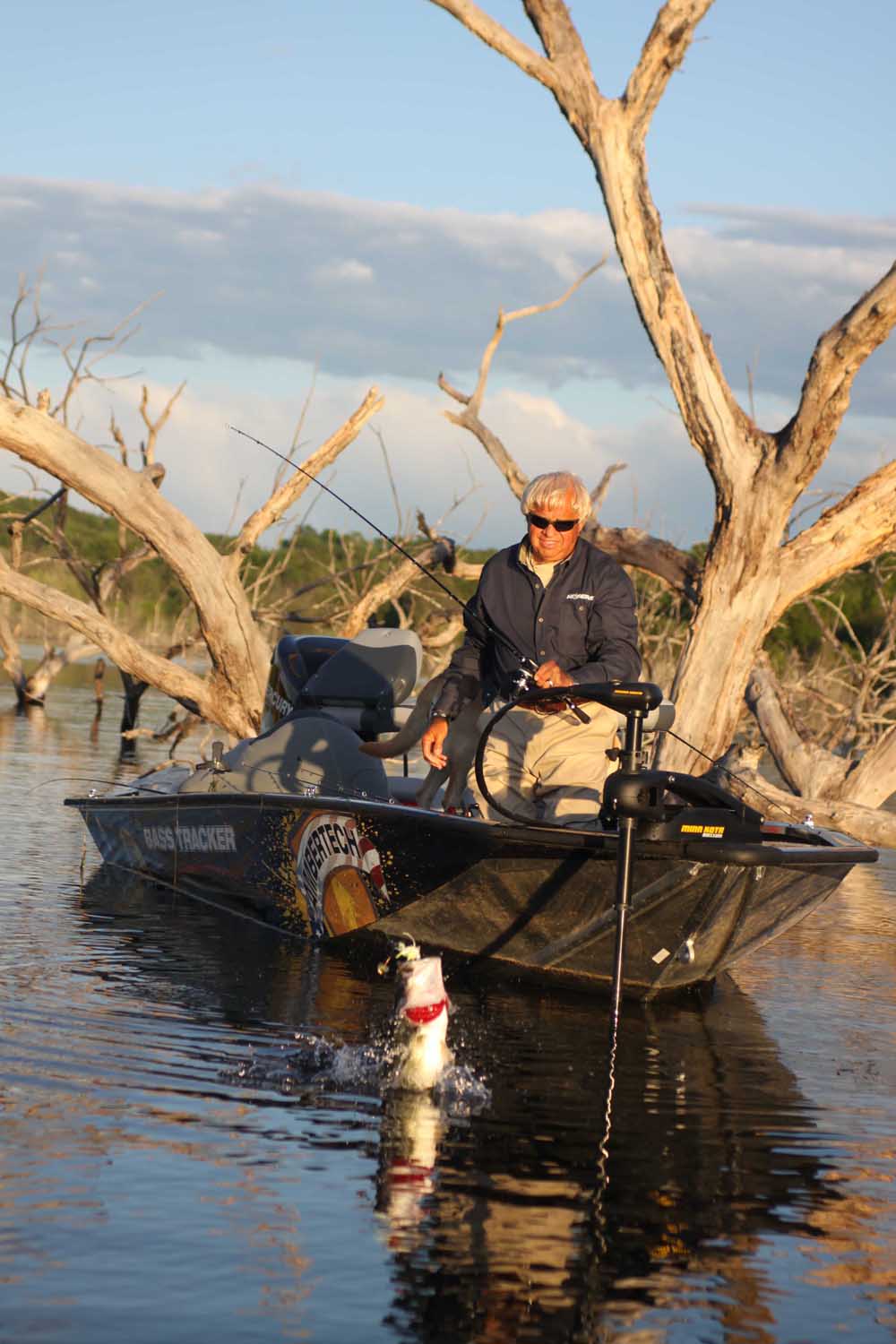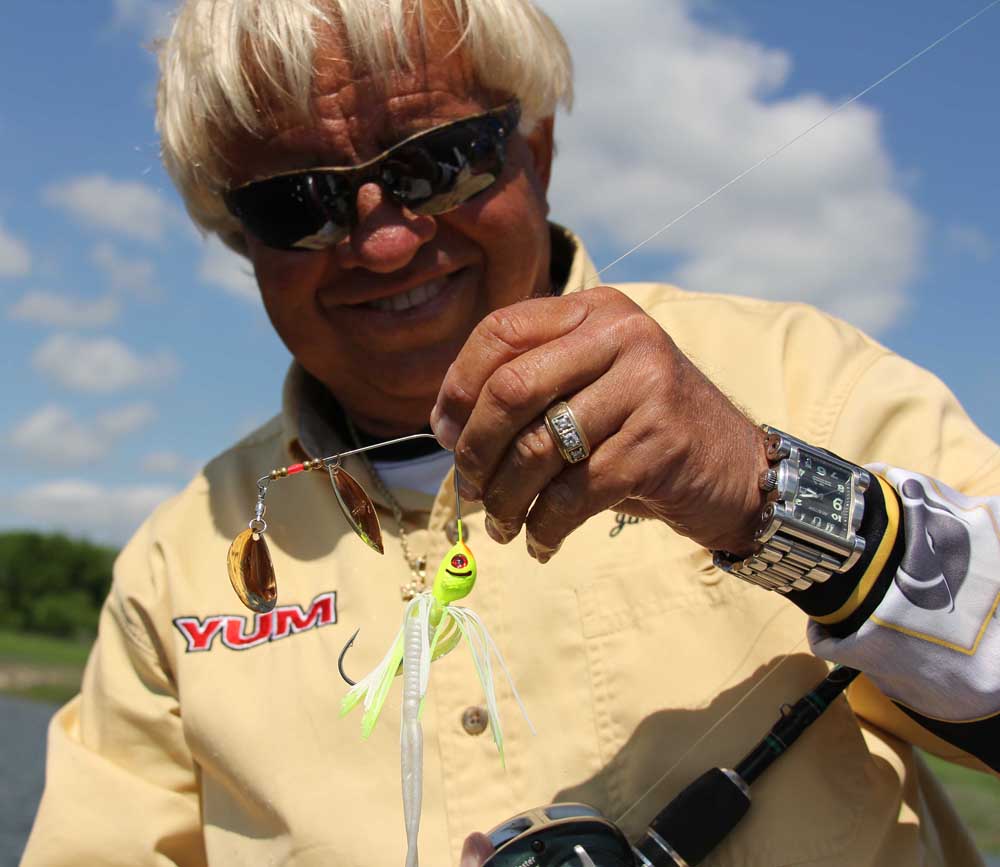
Common logic says you should tie on a lightweight spinnerbait when fishing ultra-shallow water.
But that rarely happens in Jimmy Houston’s boat, where big, ugly spinnerbaits rule as he machine-guns down a shoreline.
“I defy someone to prove to me that a bass can tell a difference between a 3/8- or 1/2-ounce bait and 1-ounce bait,” he said with a grin.
And who can question the man who has built a legendary career hurling blades over logs and through bushes around the country?
“Being big, gaudy and ugly doesn’t hurt a thing when you’re spinnerbaiting,” said Houston. “But it certainly makes you more versatile.”
In most skinny water situations, you’ll find a 3/4- to 1-ounce Booyah Blade spinnerbait tied to his line, whether he’s casting to mere inches of water or much deeper.

“It’s just so castable into the wind when you’re throwing it on heavy tackle,” explained the two-time Toyota Tundra Bassmaster Angler of Year. “You can underhand it easily to close targets and make long casts to those isolated pieces of cover away from the boat.”
In Houston’s mind, bass are more fixated on the blades than the body. However, he will change blade sizes to adjust lure speed.
“The silhouette of the bait and lure speed are more important to the fish than anything else,” he described.
If he wants to fish slower, he’ll enlarge the blades. To fish faster, he’ll change to slightly smaller blades.
“In clear water, you need to pull it a little faster so the fish doesn’t get a good look at it,” he said. “Also, with the heavier bait, you can start it fast to keep it near the top, then slow it down as the water gets deeper.”
Most spinnerbaits are dressed with two willowleaf blades or a Colorado on the shaft and a willowleaf in back. Houston prefers reversing the latter, putting a mid-size willowleaf on the shaft and a Colorado on the end.

“When you do that, you gain more vibration and still get some flash and an elongated look to the bait,” he said. “It also allows you to control the speed.”
Houston pooh-poohs the notion that blade size should match the forage.
“If the blades resembled a shad, the fish would bite the blades, not the head,” he insisted. “Really, a spinnerbait doesn’t look like anything in the water. It doesn’t look realistic like a plastic worm or a swim jig does, but they still bite it. And after all these years, I don’t know why other than they react to it when it suddenly appears overhead.”
The key to triggering reactionary strikes in shallow water is to present the bait quietly. That’s not easy with a heavy spinnerbait, but possible with the underhanded roll cast which Houston has perfected over the years.
The key, he says, is to keep the bait near the water so it doesn’t have far to fall when it lands.
“Just as the bait gets ready to hit the water, lift on the rod tip to slow it down so it stops just before it lands,” Houston described. “That’s critical in shallow water, because the bait often enters the water within inches of the fish. You don’t want to spook him; you want him to react.”
Houston’s rapid-fire of big spinnerbaits target the easy, dumb fish he says, and lets him cover more water.
“If I make 100 casts down a bank where a guy fishing something slower makes 20 or 30, who is going to have a better shot at those fish?” he offered.






